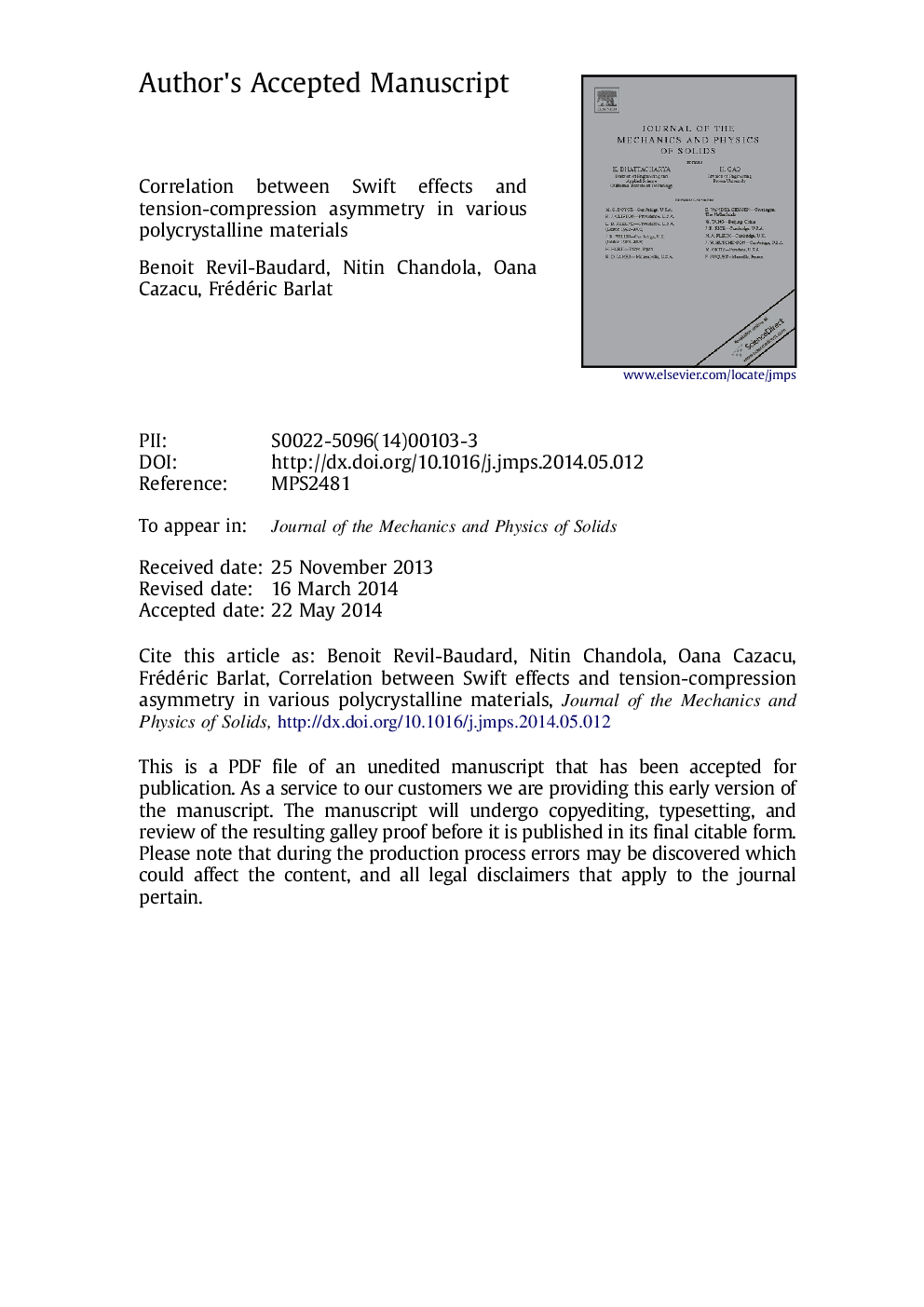| Article ID | Journal | Published Year | Pages | File Type |
|---|---|---|---|---|
| 7178222 | Journal of the Mechanics and Physics of Solids | 2014 | 24 Pages |
Abstract
In this paper, a correlation between Swift effects and the stress-strain behavior in uniaxial tension and compression is established. It is based on an elastic-plastic model that accounts for the combined influence of anisotropy and tension-compression asymmetry. It is shown that, if for a given orientation the uniaxial yield stress in tension is larger than that in compression, the specimen will shorten when twisted about that direction; however, if the yield stress in uniaxial compression is larger than that in uniaxial tension, axial elongation will occur. Furthermore, it is shown that on the basis of a few simple mechanical tests it is possible to predict the particularities of the plastic response in torsion for both isotropic and initially anisotropic materials. Unlike other previous interpretations of the Swift effects, which were mainly based on crystal plasticity and/or texture evolution, it is explained the occurrence of Swift effects at small to moderate plastic strains. In particular, the very good quantitative agreement between model and data for a strongly anisotropic AZ31-Mg alloy confirm the correlation established in this work between tension-compression asymmetry and Swift effects. Furthermore, it is explained why the sign of the axial plastic strains that develop depends on the twisting direction.
Keywords
Related Topics
Physical Sciences and Engineering
Engineering
Mechanical Engineering
Authors
Benoit Revil-Baudard, Nitin Chandola, Oana Cazacu, Frédéric Barlat,
